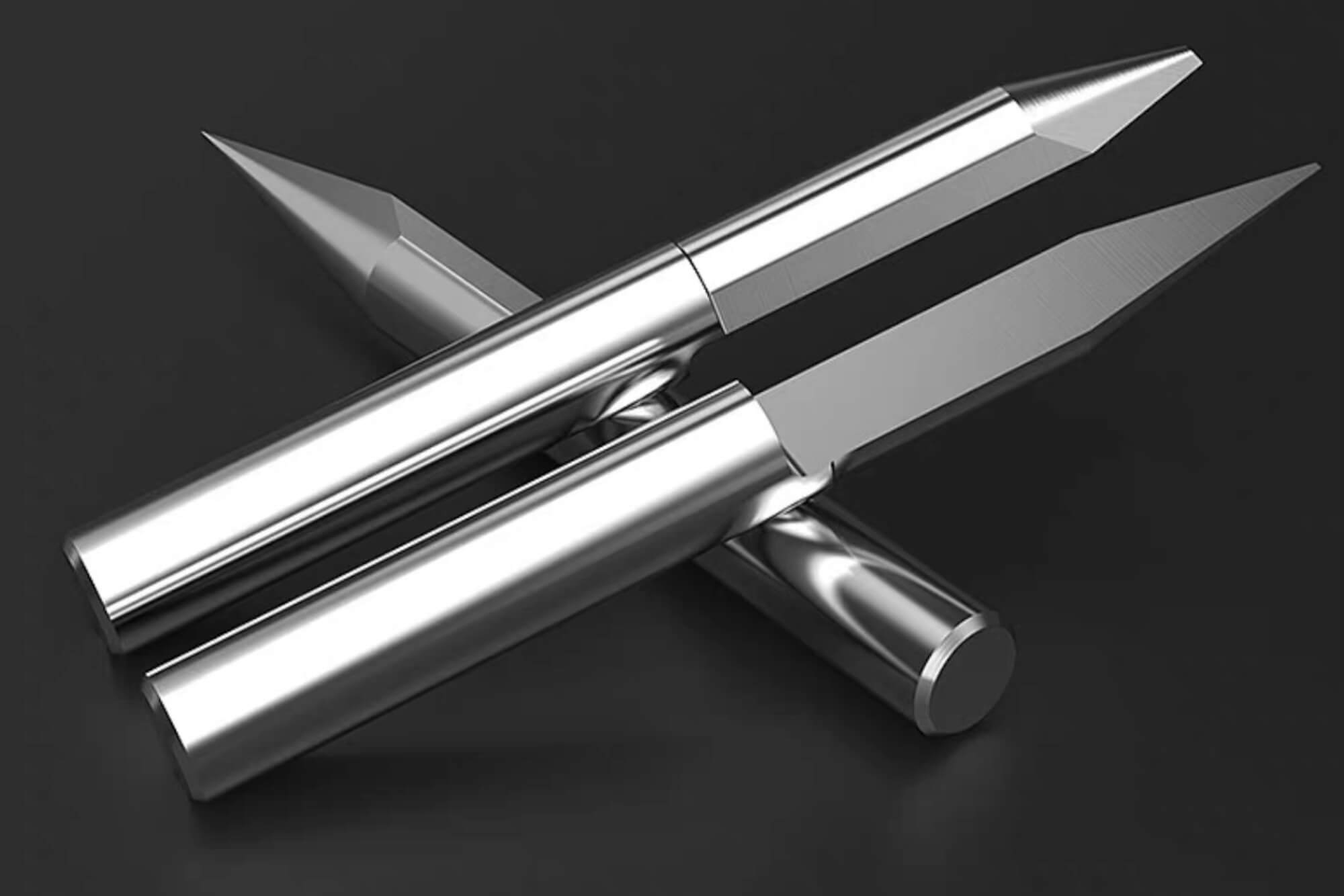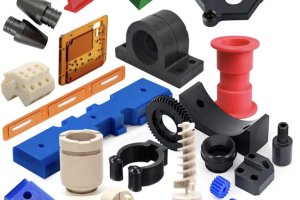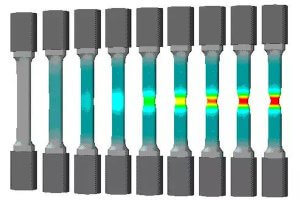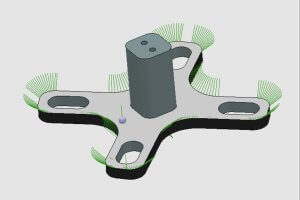I. Introduction to CNC Router Bits
If you’ve ever worked with a CNC router, you already know the bit you choose can make or break your project. When I first got into CNC machining, I underestimated how important CNC router bits were. I thought they were all the same — until I burned a slab of oak, shattered an acrylic sheet, and chipped a dozen pieces of MDF.
That’s when I realized the router itself is only part of the equation. The CNC router bit is the actual cutting edge. It controls the finish, the speed, the precision — everything.
In this guide, I’ll break down what I’ve learned, tested, and used in my small CNC workshop, where I mostly build furniture parts, signs, and the occasional prototype enclosure for electronics. Whether you’re new or seasoned, I hope this article helps you make better decisions about buying and using CNC router bits.
II. Types of CNC Router Bits and Their Applications
There’s a wild variety of CNC router bits out there. Some are built for speed, some for detail, and some are unforgiving unless you know exactly how to handle them. Let me walk you through the most common types and how I’ve used them.
Common CNC Router Bits
| Bit Type | Shape / Profile | Best for | Pros | Cons | My Use Case |
|---|---|---|---|---|---|
| Straight Bit | Flat end | Softwood, MDF | Easy to control | Poor chip removal | Clean pocketing in MDF signs |
| Spiral Upcut | Helix, cuts upward | Wood, plastic, aluminum | Good chip evacuation | May tear top edges | Deep grooves in hardwood |
| Spiral Downcut | Helix, cuts downward | Laminates, plywood | Clean surface finish | Poor chip clearance | Top-facing engravings on plywood |
| Compression Bit | Up/down spiral combo | Plywood, composites | Clean top and bottom edges | Expensive | Cutting out cabinet parts |
| Ball Nose Bit | Rounded tip | 3D contouring, detail | Smooth 3D surface | Not for straight cuts | Relief carvings and 3D signs |
| V-Bit | V-shaped, angled | Engraving, chamfering | Great for detailed lettering | Limited depth options | Decorative signage text |
| Engraving Bit | Small angled or pointed | PCB, soft material engraving | High precision | Fragile, slow | Small-scale logo engravings |
Each of these CNC router bits has its place in my shop. For instance, when I want that flawless finish on laminated plywood edges, I won’t touch anything but a compression bit. But for quick MDF cutting, a simple 2-flute straight bit is still my go-to.
Bit Selection Based on Material
| Material | Recommended Bit Type | Reason |
|---|---|---|
| Softwood | Straight, Upcut Spiral | Low resistance, less burning |
| Hardwood | Downcut Spiral, Compression | Clean edges and no chip-out |
| MDF | Compression, Straight | Avoids tear-out, keeps surface neat |
| Acrylic / PVC | Single-Flute Upcut | Reduces melting, clears chips fast |
| Aluminum | Single-Flute Spiral | Needs high chip clearance, prevents welding |
| Plywood | Compression | Clean both sides of the cut |
These are general guidelines. I’ve learned through trial and error that what works on one plywood sheet might struggle on another — especially with varying glue content.
III. How to Choose the Right CNC Router Bit
When I first started buying CNC router bits, I’d just look at price. Rookie mistake. What I’ve learned since is that you need to match the bit to three things: your material, your machine, and your purpose.
Key Factors to Consider
1. Material Compatibility
Different materials behave differently under load and heat. You wouldn’t use the same bit for aluminum as you would for MDF. Material hardness, density, and the type of finish you want all play a role.
- Soft materials like foam, pine, and MDF cut easily but can fray or burn.
- Hardwoods like oak or maple demand tougher bits with sharper edges.
- Plastics need special flute geometries to avoid melting.
- Metals, even aluminum, need specific single or dual flute geometries with high chip clearance and often benefit from coatings.
2. Bit Size & Shank Diameter
Bit size impacts the cut width, rigidity, and how deep you can cut. The shank diameter must match your CNC collet size.
- 1/8″ shank: Great for fine detail, but breaks easier.
- 1/4″ shank: Most versatile and common in desktop CNCs.
- 1/2″ shank: Better for heavy-duty routers and deeper cuts, less vibration.
3. Flute Count & Geometry
Flute geometry directly affects chip removal and cut quality. Here’s a breakdown:
| Flute Count | Best For | Pros | Cons |
|---|---|---|---|
| 1-Flute | Plastics, Aluminum | Great chip evacuation | Less rigid, rougher finish |
| 2-Flute | Wood, MDF | Balanced performance | Standard for general use |
| 3-Flute+ | Metal, Hardwoods | Smoother finish | Requires higher feed rates |
Don’t overlook helix angle either — lower angles are more aggressive, while higher angles produce smoother finishes.
4. Bit Length and Cutting Depth
You should always use the shortest bit that can reach your cutting depth. Long bits may flex or vibrate, causing poor accuracy or breakage.
- Short bits = less deflection, better control.
- Long bits = deeper cuts, but more stress on your machine and the bit.
5. Tip Style
Each tip geometry serves a purpose:
- Flat tip: For pockets and straight-edge cuts.
- Pointed tip/V-tip: For engraving and lettering.
- Ball nose: For 3D sculpting and relief work.
6. Coatings (TiN, TiCN, DLC)
Coatings reduce friction and heat, especially in metals or extended jobs.
- TiN (Titanium Nitride): Good general-purpose coating for wood and plastic.
- DLC (Diamond-Like Carbon): Excellent for aluminum and composites.
- Uncoated: Fine for hobby use, but wears faster.
7. Budget vs Performance
This is where you need to balance:
- Are you doing production work or hobby projects?
- Do you prioritize finish quality or speed?
For example, I’ll use a $30 Amana compression bit for fine furniture parts but switch to a $3 SpeTool spiral for rough MDF prototyping.
My Simple Bit Selection Checklist
| Task Type | Material | Bit Recommendation |
|---|---|---|
| Pocketing Signs | MDF/Wood | 2-Flute Straight or Compression |
| Deep Slotting | Hardwood | Spiral Upcut with proper ramping |
| Surface Flattening | Any Wood | Fly Cutter or Surfacing Bit |
| Fine Lettering | Wood/Acrylic | 60° or 90° V-Bit |
| Cutting Plastics | Acrylic/PVC | Single-Flute Upcut |
| Aluminum Profiling | 6061 ALU | 1-Flute or 2-Flute Spiral |
I often buy bits in bundles based on this list. It saves money, and I know what I’ll actually use. Over time, this list has become a cheat sheet that saves me from wasting time (and wood).
IV. Best Practices for Using CNC Router Bits
I can’t count how many early mistakes I made simply because I didn’t understand how to run my cnc router bitsproperly. I snapped bits, burned wood, and left nasty ridges on surfaces that should’ve been smooth.
Once I began following some basic practices, my results changed overnight. Here’s what worked for me:
1. Bit Installation Matters
Always make sure the bit is fully seated — but not bottomed out — in the collet. Pull it out by 1–2mm to prevent heat transfer into the spindle.
2. Match Feed Rate and Spindle Speed
The relationship between feed rate and spindle speed is what determines chip load. And chip load affects tool life, cut quality, and heat generation. Here’s a simple reference I created from my shop settings:
Feed Rate vs. Spindle Speed (for Wood)
| Bit Diameter | Spindle Speed (RPM) | Feed Rate (mm/min) | Depth per Pass | Chip Load (approx) |
|---|---|---|---|---|
| 1/8″ | 18,000 | 1000–1500 | 1–2 mm | 0.05 mm/tooth |
| 1/4″ | 16,000 | 2000–2500 | 2–3 mm | 0.08 mm/tooth |
| 3/8″ | 14,000 | 3000–3500 | 3–4 mm | 0.12 mm/tooth |
Start conservative and adjust upward. Every machine and material behaves a little differently.
3. Depth of Cut & Step-Over Settings
- Roughing Passes: Use deeper cuts (up to 60% of bit diameter) with wide stepover.
- Finishing Passes: Use shallow cuts (10–20%) and minimal stepover (~10%).
I’ve found that even cheap cnc router bits can perform well if you treat them right with shallow, precise finishing passes.
4. Avoid Heat
- Wood: Slow down the spindle if you see burn marks.
- Plastic: Increase feed rate or switch to single-flute bits to avoid melting.
- Aluminum: Use air blast or mist coolant if possible.
5. Use Ramping and Lead-Ins
Plunging straight down is a fast way to dull or break a bit. I always enable ramp-in cuts or helix plunges, especially for spiral tools.
6. Replace Dull Bits Promptly
If you’re seeing tear-out, burn marks, or unexpected chatter — stop and inspect your bit. A dull edge can ruin hours of work in seconds.
V. Maintenance and Storage
I used to toss my CNC router bits into a random drawer. Big mistake. Not only did they get dull faster, but I also wasted time digging through unmarked tools every time I started a new job. Now, I’ve developed a much better system.
Cleaning Your Bits
CNC router bits accumulate resin, pitch, and dust, especially after cutting MDF or softwoods. If left on the bit, this buildup creates heat, reduces cutting quality, and shortens tool life.
Here’s my go-to cleaning method:
- Soak the bit in a non-corrosive degreaser (like Simple Green or a citrus-based cleaner) for 10–15 minutes.
- Scrub gently with a brass or nylon brush.
- Rinse with water and dry completely.
- Spray lightly with a rust inhibitor if storing long-term.
Avoid:
- Steel wire brushes (they scratch the cutting edge).
- Harsh solvents like acetone, which can degrade coatings.
Bit Maintenance Tips
- Inspect after every job. Look for chips, cracks, or rounded edges.
- Listen to the cut. If your machine sounds louder than normal, it’s time to check the bit.
- Track usage. I keep a small log of how many hours each bit has run — especially expensive ones — to track wear.
Sharpening Router Bits
- Carbide bits are hard to sharpen without specialized tools.
- Straight bits and larger V-bits can sometimes be resharpened using diamond hones or sent to a sharpening service.
- Tiny engraving bits? Not worth it. I just replace them.
If you’re using bits professionally or often, it might be worth investing in a basic sharpening setup — or finding a local sharpening shop.
Safe Storage Solutions
A good storage system protects your investment and saves time.
| Storage Type | Pros | Cons | My Use Case |
|---|---|---|---|
| Foam bit holders | Protects from impact, easy to label | Needs space | Main storage system |
| Magnetic racks | Quick access | Can dull or demagnetize tips | Near-machine access |
| Plastic boxes | Portable, stackable | Bits can rub against each other | Travel kit |
| Wooden racks | Customizable, aesthetic | Not always dust-proof | Wall-mounted shop display |
I keep my most-used CNC router bits in a foam-lined drawer with labels and bit sizes noted. Bits I rarely use go into a sealed case with silica gel packs to prevent rusting.
Environmental Considerations
- Keep bits in a dry, low-humidity area.
- Avoid direct sunlight and heat — coatings can degrade over time.
- Use silica gel packs in long-term storage boxes.
Since improving how I store and clean my CNC router bits, I’ve extended their life significantly. Some of my better bits have gone through 30+ jobs and still cut clean.
VI. Recommended CNC Router Bit Sets and Brands
I’ve tested quite a few brands over the years — from Amazon bulk packs to premium pro sets. Here’s what I’ve come to trust:
Bit Brands I Recommend
| Brand | Best For | Price Range | Comments |
|---|---|---|---|
| Amana | Professional work | $$$$ | Excellent finish, long life |
| Whiteside | Hobby and pro-level | $$$ | Clean cuts, great reputation |
| Yonico | Entry-level DIY | $$ | Inconsistent QC, but great value |
| SpeTool | Affordable carbide | $$ | Chinese brand, surprisingly durable |
| Freud | Wood-focused operations | $$$ | Precise and well-balanced |
| Bosch | General home shop | $$ | Good for small CNC setups |
Recommended Bit Kits (Beginner to Advanced)
| Use Case | Recommended Set | Why It Works |
|---|---|---|
| Beginner Wood Projects | Yonico 8-piece Starter Set | Includes straight, V-bit, and ballnose |
| Sign Making | Whiteside Signmaker’s Set | Clean engraving and detail cuts |
| 3D Carving | Amana 3D Carving Collection | Ballnose tools with tight tolerances |
| All-Purpose DIY Use | SpeTool 10pc Mixed Set | Budget-friendly with broad coverage |
| Aluminum & Plastics | Kodiak Carbide or Lakeshore Carbide 1-flute sets | Optimized for non-ferrous materials |
I keep at least two sets on hand — one for wood and one for plastic — to avoid cross-contamination and wear.
VII. Purchasing Guide
I used to buy CNC router bits without much thought — whatever popped up first on Amazon or eBay. But that got me poor finishes, broken bits, and frustration.
Over the years, I’ve developed a checklist for buying the right bit at the right price — and avoiding junk.
What to Look for When Buying CNC Router Bits
1. Bit Material
- Solid carbide lasts longer and is worth the higher price for heavy use.
- High-Speed Steel (HSS) is cheaper but wears down faster — OK for beginners.
2. Brand & Reviews
If I’m buying online, I always check:
- Does the brand specialize in CNC tooling?
- Are there legit reviews with photos or videos?
- Any mention of tool life, finish quality, or breakage?
3. Bit Geometry & Coating
Look for:
- Sharp flute edges (avoid overly polished bits with rounded tips)
- Anti-stick or anti-rust coatings (TiN, TiCN, DLC, etc.)
- Center-cutting if you need plunge capability
4. Quantity vs. Quality
Sometimes it’s better to buy one great CNC router bit than a whole cheap set.
That said, if I’m doing rough prototyping in MDF, I’ll happily burn through a bulk-pack of budget spirals. For final client work or hardwood, I go premium.
Best Places to Buy CNC Router Bits
| Platform | Ideal For | Pros | Cons |
|---|---|---|---|
| Amazon | Hobbyists, DIYers | Fast shipping, reviews | Mixed quality, many knock-offs |
| AliExpress | Bulk buyers, experimenters | Cheap pricing, big variety | Long shipping, QC varies |
| Toolstoday | Pro users, Amana tools | Trusted vendor, real specs | Higher prices |
| Carbide 3D | Carbide bit bundles | Curated for Shapeoko/Nomad users | Limited selection |
| Inventables | X-Carve users | CNC-specific bit sets | Pricey |
| Local dealers | Urgent or custom needs | Fast pickup, quality support | Higher prices, limited brands |
My personal go-to lately has been Toolstoday for pro bits and SpeTool (via Amazon) for rough work.
FAQ
- What is the difference between upcut and downcut CNC router bits?
Upcut bits eject chips upward, which clears debris well but can fray the top edge. Downcut bits push chips downward, keeping the surface clean but requiring slower speeds and good dust collection. - Why is my CNC router bit burning the wood?
Likely causes include a dull bit, low feed rate, or too-high spindle speed. Slow down your RPM and speed up your feed to produce chips, not dust. - Which CNC router bits are best for cutting MDF?
Compression bits or straight 2-flute bits work great for MDF. Compression bits give clean top and bottom edges, especially on through-cuts. - Can I use the same bit for wood and acrylic?
Technically yes, but not ideal. Acrylic needs single-flute bits and higher chip clearance to prevent melting. Using a wood bit on plastic can cause heat and poor edge finish. - What is a compression bit and when should I use it?
It’s a bit with downcut flutes on top and upcut flutes on bottom — perfect for clean cuts in plywood and laminated materials. Use it when you need perfect edges on both sides. - How do I know when a CNC router bit is dull?
You’ll see frayed edges, burn marks, or hear squealing. If you have to slow down to avoid chatter or get poor finishes, it’s probably dull. - How do feed rate and spindle speed affect bit performance?
Feed too slow or spin too fast = heat and wear. Spin too slow or feed too fast = chatter and breakage. Match them to maintain chip load. - Why is my CNC router chipping material edges?
This is often due to using upcut bits on brittle or veneered surfaces. Switch to downcut or compression bits and reduce your pass depth. - What bit should I use for 3D carving?
Ball nose bits — usually 1/8″ or 1/4″ — work best for 3D work. For finishing, I use a small-radius ball nose (like 1/16″) for high detail. - Are cheap CNC router bits worth it?
For practice, yes. For final work or hard materials, no. Cheap bits wear faster, chip easier, and often come with poor QC. - How can I avoid tool marks on my material?
Use a finishing pass with a smaller stepover (5–10%). Keep your bit sharp and reduce deflection by using shorter bits. - How deep can I cut in one pass?
Generally, 50–80% of the bit’s diameter is safe. With carbide bits in softwood, I’ve gone 2x the diameter in ideal conditions. - What’s the best way to clean CNC router bits?
Soak in a non-corrosive degreaser and scrub with a soft brush. Avoid acid-based cleaners and wire brushes. - Do coating types really matter for CNC router bits?
Yes. TiN, TiCN, and DLC coatings reduce friction and wear, especially for aluminum or long jobs. - Can CNC bits be resharpened?
Straight bits and larger tools can. Tiny V-bits and ball nose tools usually aren’t worth sharpening unless you have specialized gear. - What’s the best CNC router bit set for beginners?
Look for sets that include a mix of straight, V-bits, and spiral up/down tools. Whiteside and SpeTool offer good starter kits. - Are CNC router bits different from handheld router bits?
Some overlap, but CNC bits are optimized for automated feeds and often have center-cutting features. - Can I use metal-cutting bits on wood?
Yes, but you may not get clean finishes. Some aluminum bits work well on hardwood, but plastics and softwoods can gum up metal bits. - Is there a universal CNC router bit?
Not really, but a good 1/4″ upcut spiral can handle a lot of tasks. That said, you’ll always get better results using task-specific bits. - How should I store CNC router bits safely?
Use foam holders, magnetic racks, or even modified drill bit cases. Keep them dry and upright to avoid tip damage and rust.
Final Thoughts
When I started CNC work, I thought everything was about the machine. But over time, I’ve realized it’s really the CNC router bits that define success. Investing time in choosing and learning how to use the right bit has saved me materials, money, and stress.
I hope this guide gave you a clear, real-world take on cnc router bits — no fluff, just useful tips and firsthand experience. If you’re just getting started, keep it simple: buy a small set, learn how to use it, and upgrade as your projects demand it.
The right bit can turn an average CNC machine into a precision tool. And the wrong one? It’ll just waste your time.
Further Reading and References
If you’re looking to dive deeper into the world of CNC router bits, their mechanics, material science, and machining theory, here are several reliable and non-commercial sources I’ve found useful. These offer both technical depth and general education — perfect whether you’re a beginner or just looking to expand your understanding.
- Wikipedia – CNC Router Bit Types
A solid overview of router bit categories, including profiles and common applications.
🔗 https://en.wikipedia.org/wiki/Router_bit - Wikipedia – Computer Numerical Control (CNC)
A foundational article on CNC technology — including how G-code, toolpaths, and bits work together.
🔗 https://en.wikipedia.org/wiki/Numerical_control - Scribd – Woodworking Tool Geometry Basics (via Fine Woodworking Archive)
A non-commercial PDF resource explaining the geometry and cutting mechanics of router bits in woodworking.
🔗 https://www.scribd.com/document/480739903/FWW-Router-Bit-Guide
Other Articles You Might Enjoy
- Titanium Drill Bits in CNC: Boost Efficiency Today
Introduction: Unlock Efficiency with Titanium Drill Bits in CNC Titanium drill bits are game-changers for CNC machining. If you’re working with titanium alloys—like the tough 6AL-4V used in aerospace parts—you…
- Ceramic Drill Bit: The Ultimate Guide for Precision Machining
Introduction I remember the first time I encountered a ceramic drill bit in a small-scale CNC workshop. It was a brief moment, but it sparked my curiosity about these robust…
- Mastering the Metal Cutter: Your Guide to CNC Precision Cutting
Introduction: Why Choosing the Right Metal Cutter Matters in CNC Machining When I first started exploring CNC machining, I quickly realized that not all cutting tools are the same. The…
- Using Lathe Tools for Complex CNC Machining Parts
In CNC machining, precision and efficiency are crucial. For engineers working on complex parts, choosing the right lathe tools is essential. When dealing with intricate shapes, deep holes, or thin-walled…
- Jigs and CNC: Enhancing Precision in Modern Manufacturing
Introduction Jigs are the unsung heroes of CNC machining, making sure every cut lands exactly where it should. In manufacturing, jigs team up with CNC—Computer Numerical Control—to crank out parts…
- CNC Cutting Machine Comparison: Laser vs Plasma vs Waterjet vs Router
I’m excited to share my complete comparison guide on the CNC cutting machine. Over the years, I’ve worked with various CNC setups and seen how each technology handles different materials and…
- CNC Machine Cost Explained: A Complete Guide by Type, Application, and ROI Considerations
Introduction: Why CNC Machine Cost Matters When I first started exploring CNC machining, the first question I had—and probably yours too—was, "How much does a CNC machine cost?" Like most things in…









